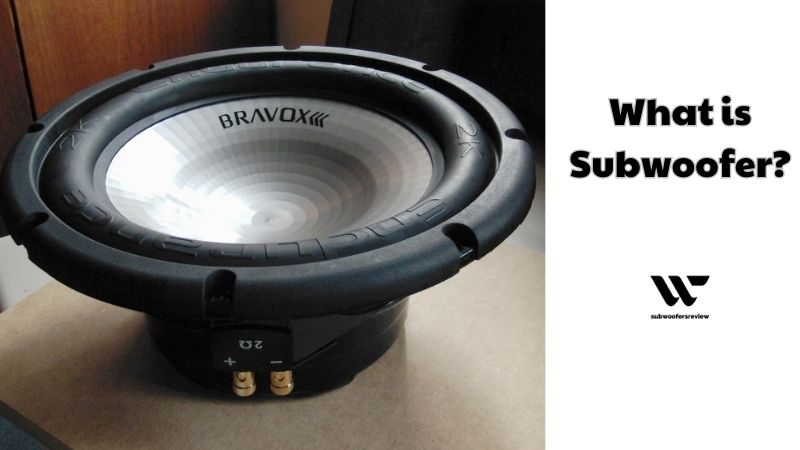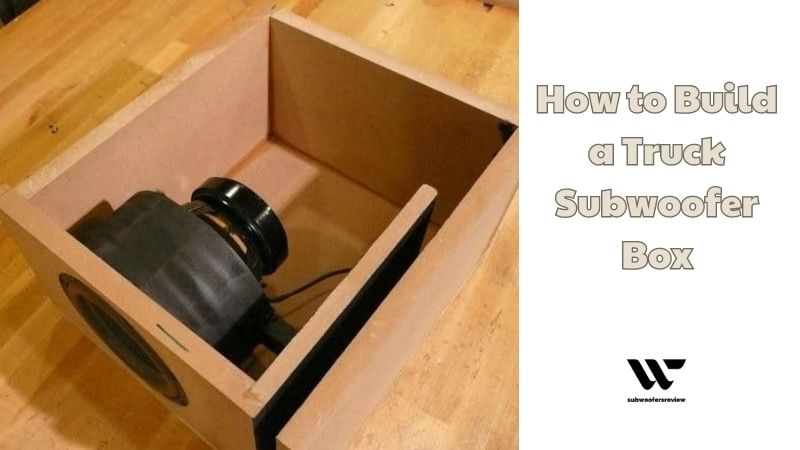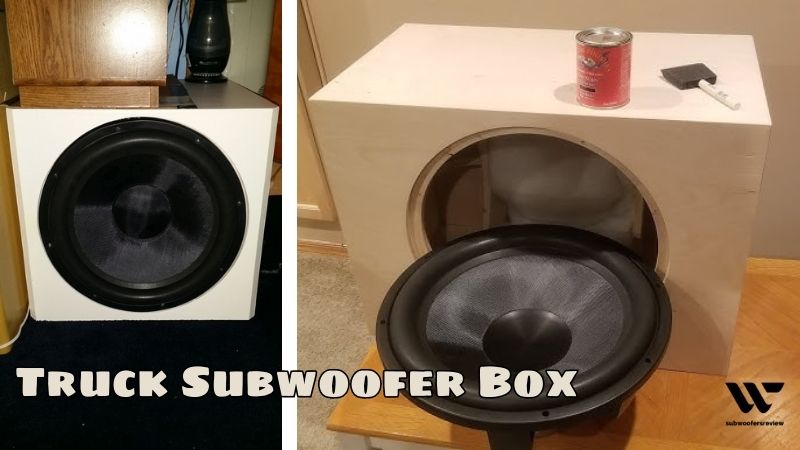Are you looking to take your truck’s audio system to the next level? Adding a subwoofer can provide that deep, rich bass that will make your favorite songs come alive. So, how to build a truck subwoofer box?
In this step-by-step guide, subwoofersreview will walk you through the process of building a truck subwoofer box from start to finish. So, let’s dive in and get started on creating the perfect enclosure for your subwoofer!
What is Subwoofer?
The subwoofer is a member of the subwoofer speaker series, which is made with the goal of producing the lowest frequency from which listeners may hear a pleasant, loving sound with a unique design. The subwoofer operates independently with the purpose of producing sound at low frequencies between 20 and 200 Hz (bass), the sound having a powerful tone.
The sound system will sound better when this subwoofer is properly used and integrated into it. Depth and width improve the soundstage and might lessen loud noises.
These speakers are in charge of many audio channels, such as the center channel, surround effect channel, etc., due to their popularity in theater, stage, and home karaoke sound systems. The sound system must provide bass.
The microphone will be better and more sensitive, the sound will be warmer, the bass will be deeper and thicker to make it seem more authentic, and the subwoofer will assist the bass.
The subwoofer is particularly vital in helping to fully transmit all the sound levels of the music being played because the bass is always the best sound in a music sound system. As a result, the music is more intense and potent while also becoming softer and deeper due to the low frequency range of 20 Hz to 200 Hz.

Tips for Choosing the Right Subwoofer
Pick the proper speaker size
The quality and depth of the bass will be reflected in the driver size selection. Selecting a speaker with a size of above 15 inches should be your first priority if you use it to watch movies. The bass will be lowered down so that you won’t hear it when listening to music.
If you need speakers for family or corporate karaoke in a room with an average size, pick a speaker that is between 10 and 12 inches in diameter.
Ensures the system as a whole is in tune with the subwoofer
To prevent waste and avoid overusing the subwoofer, you should make sure that it works well with the other speakers in the family’s karaoke system.
In this case, the subwoofer’s 40Hz frequency range will be wasted because your speaker system only has a 45Hz frequency range. The sound system will be different, though, if you utilize speakers that have a 65Hz frequency range.
Invest in a single manufacturer’s full line of speakers
You will undoubtedly achieve subwoofer harmony with other sound systems when you purchase a comprehensive set of speakers from a single manufacturer because they are all capable of interacting with one another.
If you have a subwoofer, you should think about matching your speaker selection to it. If you utilize a slightly sub-woofer, you need pay closer attention to the amp’s power and choose an amp whose power is greater than that of the subwoofer.
As a result, it will make sure that the speaker’s operating system is consistent, producing bass that is round, full, and clear. If you have no prior experience purchasing a subwoofer, go with an electric sub that is simple to operate.

How to Build a Truck Subwoofer Box
Before beginning, gather the following items: woofer, tape measure, 3/4-inch 4 x 8-foot MDF board, 1/4-inch wood bit, 1 1/2-inch Phillips countersunk wood screw, Table or skill saw, Saber saw with rip blade, pencil, power drill, Countersunk drill bit, speaker wire, Cutter pliers, terminal crimping machine, Sliding terminal, Dacron pillow core, Wood glue, Silicone glue.
You should adjust the back seat such that the subwoofer box is in the back. Measure the height of your box from the ground up. Measure the distance between the back of the seat and the cabin’s back wall at the desired height. In order to fit at least one 8-inch speaker and grille bracket, modify the expected height of your subwoofer down till the top is at least 9 inches wide. This is especially important if the final measurement is less than 9 inches.
Look for the published closed-box volume for each specific woofer. The cubic foot or a portion thereof is used to express this volume. This volume plus the MDF’s thickness should equal the size of your box. One cubic foot, or 12 x 12 x 12 inches, is equal to 1,728 times the woofer’s stated closed-box volume requirement.
One of your external dimensions is the speaker’s size plus one inch. The interior measurements less the MDF’s double thickness, or 2 times 3/4 inch, equals 1 1/2 inch. Add that to the inside measurement of the desired box’s height or breadth. To determine the remaining inner size, divide the resultant number by 1,728. Once you have the appropriate volume, adjust the height or width.
Mark the outside measurements of the box’s six sides on the MDF. Cut with the saw blade’s breadth in mind. Make a mark on the top board the size of the woofer’s inner flange, then use a hacksaw to cut off the circle.
Put the box together using screws and wood glue. For the speaker wire, drill a 1/4-inch hole in the side panel. Leaving 1 foot of extra wire at each ends, thread the speaker wire through the hole and toward the speaker hole.
At both ends, split a 3 inch wire. strip at either end of 1/4 inch. Leave the spring terminals naked or bend the terminals to suit the speaker tabs. connecting the speakers. Place the speaker in the box after placing the pillow inside. Putty the speaker in place by applying it to the back of the speaker flange. sealing ring made of silicone around the wire exit hole. Test after connecting to an amp.
Bottom Line
In conclusion, building a truck subwoofer box is a rewarding project that allows you to customize your audio system to your specific needs and preferences. By following the step-by-step guide outlined in this article, you can successfully create a subwoofer box that fits your truck perfectly and enhances your listening experience.
Remember to carefully measure and plan before cutting any materials, and take your time to ensure a precise and secure construction. With the right tools, materials, and patience, you can enjoy powerful and high-quality bass in your truck for years to come.

